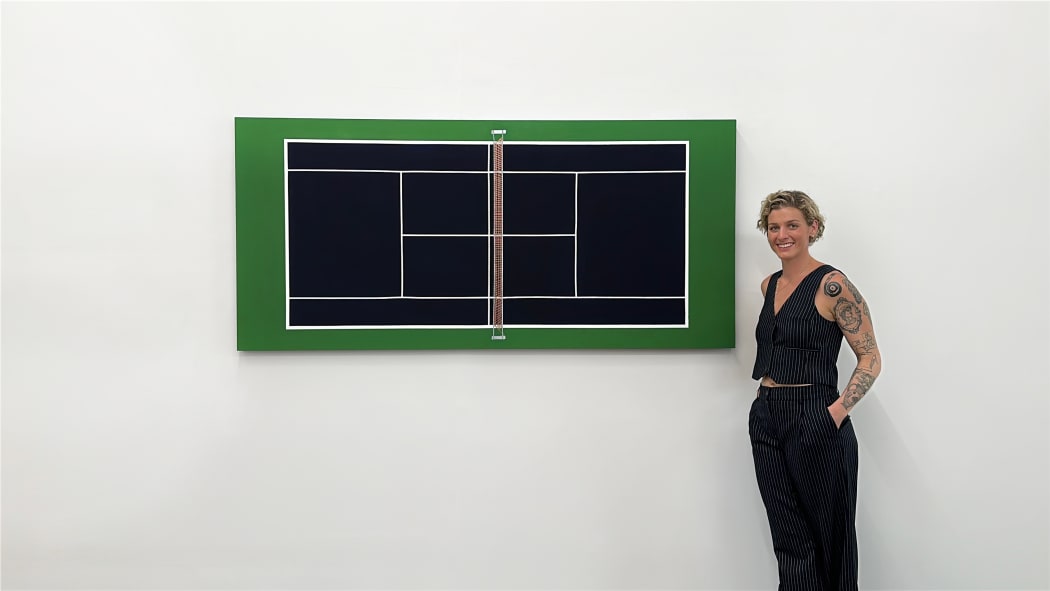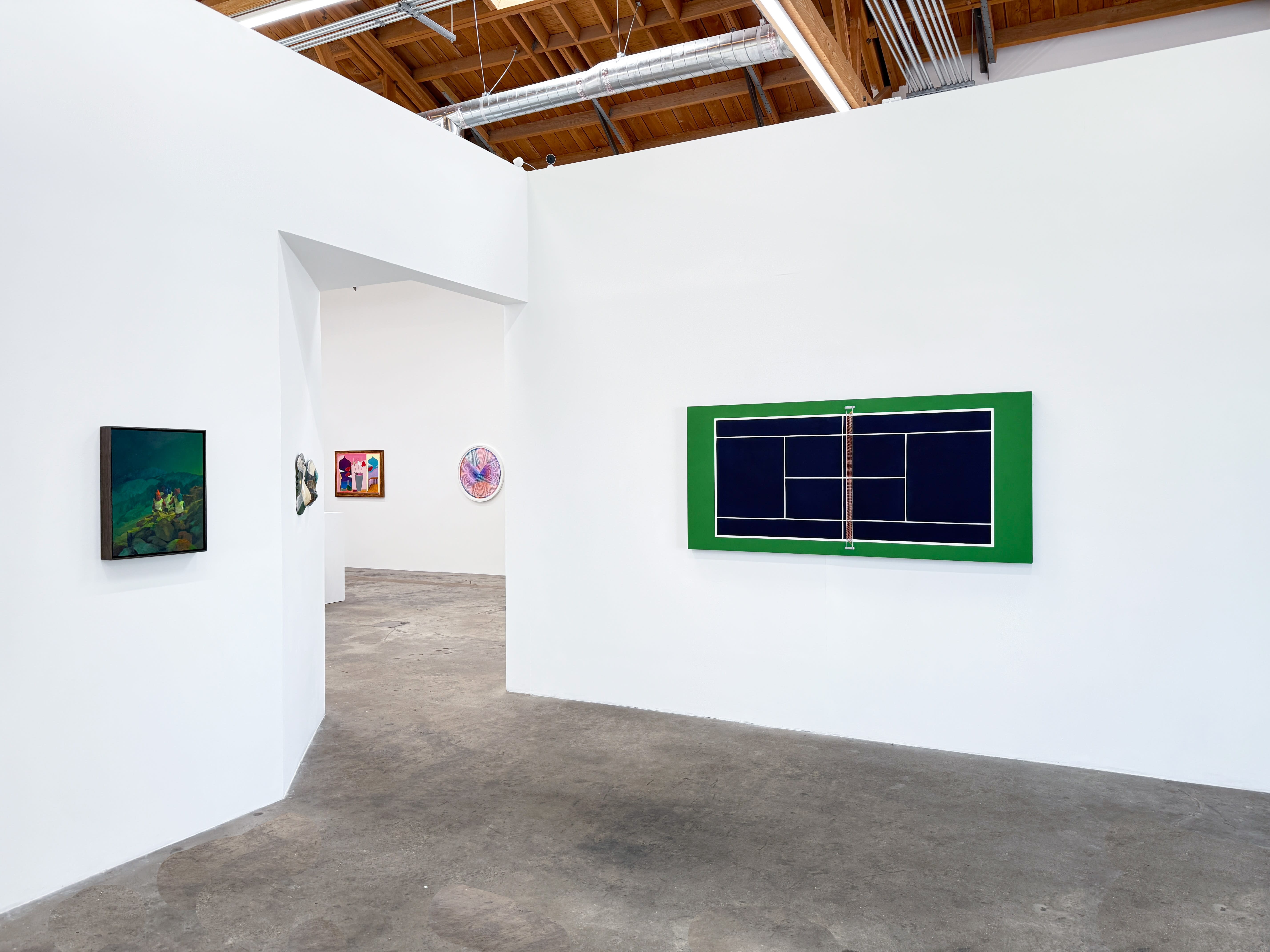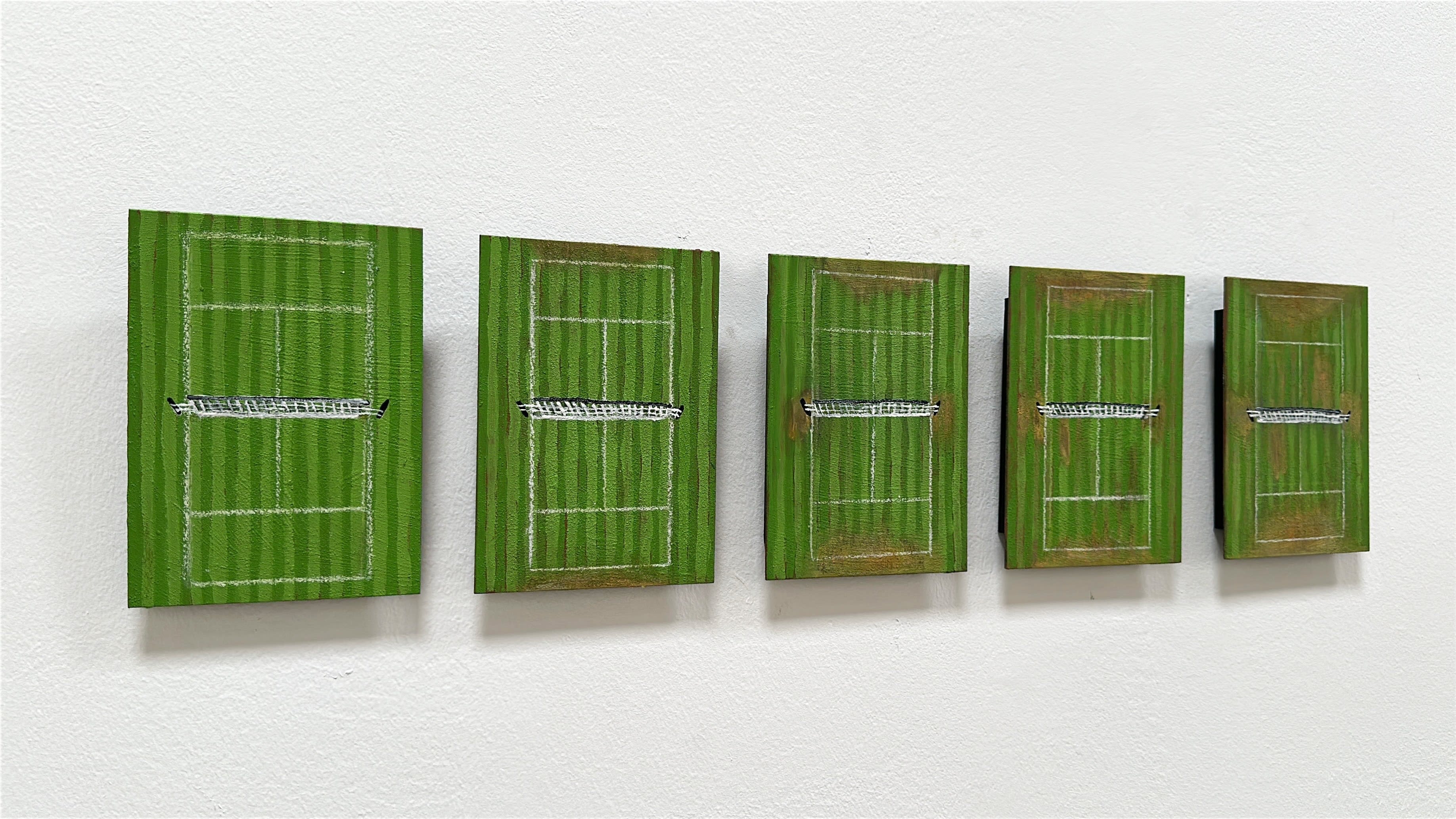
Brooke Stewart is a multidisciplinary artist based in Boston, whose work explores the intersection of sports and art. We recently had the opportunity to speak with Stewart about her artistic practice to learn more about her process and inspiration. Her artwork is currently on view at our Los Angeles gallery, part of the summer group exhibition, Game Time.
I spoke with Brooke Stewart about her artistic practice and what led her to become an artist. She began, “I’ve always had a creative mind.” She did not excel in a traditional school setting but she found that art and sports were fields where she could really express herself. Stewart stated that art class was a place where she could process and problem solve in a way that made sense to her. When speaking about art, she said “It was a language I completely understood. I don't think I could do anything else.” She studied art history and studio art in her undergraduate education at William and Mary and later went on to earn her MFA at Tufts University.
Just like her artistic practice, sports came naturally to Stewart. With an athletic family, Stewart was introduced to sports at a young age. She started out with swimming, noting that she really enjoyed the repetition of the sport and the sounds of the water. Later, she began playing basketball, inspired by her older sister. She found a similar rhythm in the sport through the dribbling drills she would practice at the hoop her dad set up in front of their house. Through practice, she improved her skills and went on to play basketball at William and Mary under an athletic scholarship.

Brooke Stewart's painting Indian Wells Open (right) pictured in "Game Time" at Abigail Ogilvy Gallery (Los Angeles, May-July 2025).
Stewart’s undergraduate experience was rooted in a traditional, “old-school” arts education, which gave her a strong foundation in technique and form. It wasn’t until graduate school that she was introduced to contemporary art, a turning point that expanded her understanding of what art could be. Artists like Dana Schutz and Nicole Eisenman quickly became inspirations. She described some of her early work with her solo exhibition Bad Math, featuring portraits of her artist friends, incorporating unconventional materials like recycled paper and objects connected to the subjects, like cat hair. Then looking more towards abstract artists, like Agnes Martin, Stewart began to explore portraits of places, rather than people. She stated that she wanted to portray “places that are meaningful to me, places have changed the trajectory of female sports.” After reading Billie Jean King’s book, she was inspired to start with tennis, painting important sites in women’s sports history.
Site plays an important role in Stewart’s artwork. She described how some of her site portraits are based on memory or imagined sites, while others are actual locations; for example her painting of the Houston Racquet Club court documents where the the contracts for the WTA’s first women’s tournament were signed. She described this moment as one of the first fights for equal pay, with women signing for only a dollar, just to have their own contracts. In our conversation, Stewart described how courts are sacred ground, not only those that have historical significance, but the court itself. She emphasized how a designated space for play should be celebrated. She discussed a recent shift she has noticed, with less children playing outside, but stressed how important sports were in her own life, creating some of her “fondest memories as a kid.” Her work celebrates the court as a site of historical change, but also, more simply, as a place of designated play and community.

According to Stewart, in many ways, “artists and athletes are the same.” She describes how both athletes and artists “search for the flow state.” She said, “when you're making a piece of art, the more that you allow yourself to respond to the work and be in conversation with the work, the better the work is” Similarly, in sports, the moment you start overthinking every play, the worse your game is. Her approach to sports and her artistic practice are similar, and even influence each other. She described how distance running has helped her calm her mind, which allows her to better approach her artistic work.
We discussed her artistic process and what exactly goes into the making of each piece. She starts with a small painting on a 5 x 7 clayboard to test materials and colors. Once satisfied, Stewart moves on to sketching out the piece. All of the panels are made by hand, and to scale, but in inches (for example, a tennis court is 78 x 36 feet so these panels are 78 x 36 inches). Stewart stated “I am thinking about scale from the beginning. And that's really important to me.” When painting, she uses a material similar to pavement paint– containing small ceramic spheres that absorb light and allow for a matte, textured surface that mimics the material of the court. She discussed how she plays with material, testing out different methods to get the texture and colors just right.
When describing her biggest inspiration, both artistic and otherwise, Stewart emphasized how important her female mentors and role models have been, stating “the women in my life are so inspiring.” She described how her sisters and female professors have been significant sources of inspiration, not only in her artistic practice, but as testaments to what women can achieve. She said, “A big goal of mine is to add to the conversation of what women can do.” Many of her artistic inspirations are contemporary women artists, like Nicole Eisenman, Dana Schutz, Simone Leigh, and Katherine Bradford. She also stated, “Any time I go to a show and it rocks my world, it's either a female artist or a female curator…there's always one lady in charge.”
When asked what advice she has for artists just starting out, she emphasized the importance of coaching and learning from experiences. She talked about how, in her own experience, removing emotion from coaching can allow you to absorb more guidance without having your feelings hurt, the same goes for a critique. Stewart also emphasized the importance of “doing your homework.” She gave the example of researching people that are inspiring and seeing how they got to where they are. This is a strategy she has used in both art and sports.
Written by: Emma Lenning

Add a comment